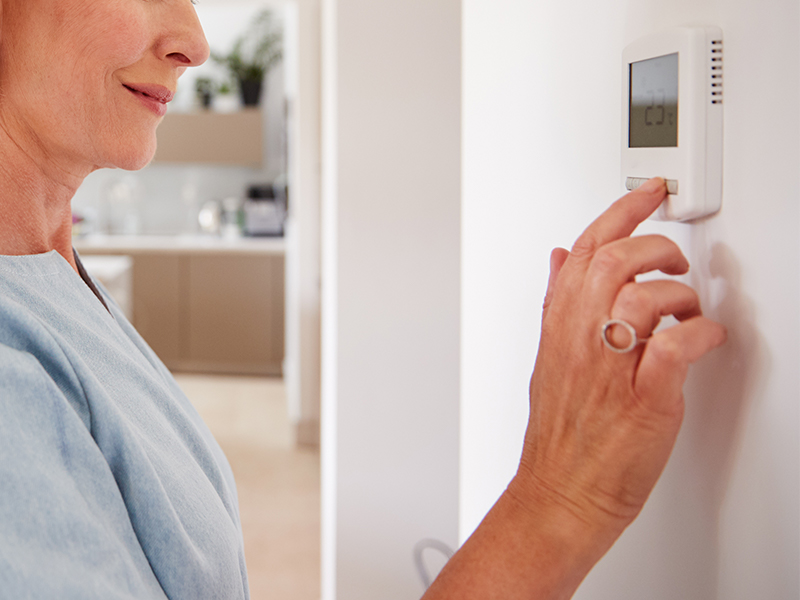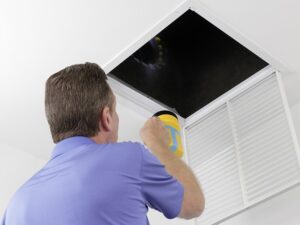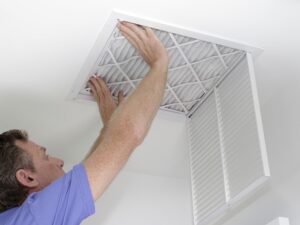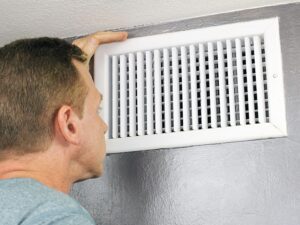
Testing Your Central Air Before Summer
If you want to limit your chance of coming home to a sweltering house and a broken air conditioning system in the peak of Summer, it’s important to test your central air system early in the year. It is easy and straightforward to check your system and can save you time and headaches in the future.
1. Check Ducts & Change Filters
Before you begin measuring temperatures, you must check the air filters in your system. Ensuring that you have a clean, brand new filter will eliminate any confusion about whether there is proper air flow during your test. You should also check your ducts for any potential air leaks and remove any vent or unit covers that you may have had during the Winter. Once you have determined that your ducts and filters are all satisfactory, you can begin your tests.
2. Locate Your Supply & Return Air Ducts
The HVAC team that installed your system may have indicated where your respective air ducts are located, but you can find them intuitively if necessary. Turn on your air conditioning unit to “Fan” setting if you have it, or well below the current temperature so that it immediately turns on. Find the air vents in your home and feel which direction the air is flowing. If the air is blowing outwards, it is a supply duct. If you feel the air being sucked into the vent, that is a return duct. Make note of where each duct is located for future testing.

3. Measure the Temperature In The Supply & Return Ducts
Turn on your air conditioning system below the current temperature and let it run for at least 10 minutes. Then, locate an air supply duct that is close to the air conditioning unit and insert a thermometer into the duct secured with tape. After 10 minutes, check the temperature, then repeat this process with your return duct for another 10 minutes. Once you have the temperatures, subtract the supply duct temperature from the return duct temperature and get a number between 14 and 20 degrees difference to indicate a properly functioning air conditioning system.
Return Duct Temp – Supply Duct Temp = Between 14 and 20
4. Analyze The Results
If your temperature difference is less than the minimum 14 degree range, your system could be suffering from low refrigerant, malfunctioning or misaligned air ducts, or dusty/dirty evaporator coils. These problems can be fixed by a simple call to your HVAC company.
If your temperature difference is greater than the 20 degree range, you could have an issue with your air ducts, compressor, or the fan size for your unit. These issues are less common, but you should call your HVAC company right away to prevent larger malfunctions.
If you perform regular duct and filter checks and execute this temperature test, you should be ready for a cool, comfortable Summer! And if you encounter any issues detailed in this walkthrough, you can call a capable HVAC maintenance and repair company like Robillard Heating & Air Conditioning.
ABOUT ROBILLARD HVAC
If you’re in need of HVAC maintenance services in North Central Massachusetts or South Central New Hampshire, Robillard HVAC is the call to make with over 15 years of experience. Our maintenance specialists work quickly, efficiently, and effectively so that your system gets back up to speed and running clean. Contact Robillard HVAC today for expert HVAC services.
For more information contact:
Robillard HVAC
Servicing North Central MA
& South Central NH
BUSINESS HOURS
7:00AM – 7:00PM
AVAILABLE 24/7 FOR EMERGENCIES
scott@robillardhvac.com
View Our Service Areas





